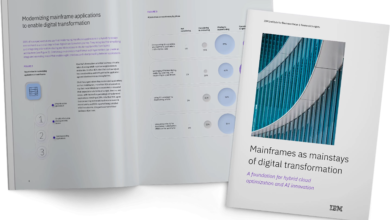
The renewable energy transition is underway. But are organizations moving fast enough?
There is a global effort to combat climate change by phasing out fossil fuels and embracing clean, renewable energy, or green energy. The United Nations Climate Change Conference in 2015, which resulted in the signing of the Paris Agreement, accelerated this renewable energy transition. Since then, policymakers and the public are increasingly aware of the dangers of fossil fuel combustion, such as carbon dioxide and other greenhouse gas emissions.
But even so, the past nine years have been the warmest on record, and continued global warming threatens the well-being of people, animals and ecosystems. It raises the question: how can we decelerate the warming?
Here, we’ll explore the renewable energy sources available to companies, the steps they can take to accelerate their own clean energy transitions and how they can garner the support of stakeholders along the way.
What are the most accessible renewable energy sources?
Renewable power, with no or low carbon emissions, can help combat climate change and curb rising global temperatures. It can also help meet the world’s growing energy demands. Renewable energy capacity grew by nearly 14%—or 473 gigawatts (GW)—in 2023 according to the International Renewable Energy Agency (IRENA). But renewable energy access and availability vary, impacting companies’ decisions on which sustainable energy they should be investing in.
While choices will differ by organization, the renewable energy sources central to the energy transition today include:
Hydro
Hydropower relies on the movement of water to spin turbines and generate electricity. As technology evolves, the International Energy Agency (IEA) forecasts that hydro will remain the largest clean energy provider through 2030.
Solar
Solar power is the conversion of sunlight into electricity through two methods: solar photovoltaics and concentrating solar-thermal power. By 2027, solar power generation will likely surpass coal and natural gas production.
Wind
Wind power involves generating electricity by using small-to-large-scale turbines. Today, wind farms harness stronger offshore winds to potentially double offshore wind power capacity.
Other renewable energy sources include geothermal and biomass. China’s central government plans to invest CNY 1.2 trillion (USD 172.32 billion) in biomass by 2025. In Africa, experts estimate that Kenya and Ethiopia might produce roughly 10,000 megawatts (MW) of energy through geothermal sources. Despite extensive public and private sector research, these energy sources don’t yet play as significant a role in energy markets as hydropower, solar energy and wind energy.
How do companies procure renewable energy?
For organizations pursuing renewable energy transitions, determining the availability of renewable sources is only one piece of the puzzle. They must also determine how they will procure and integrate renewable energy systems into their portfolios. Fortunately, they have several options and strategies, including:
Renewable energy certificates (RECs): RECs can be purchased from power plants. They show that the bearer owns one megawatt-hour (MWh) of zero-carbon electricity that has been generated by renewable energy sources and delivered to the power grid. When Intel announced its plans to build two computer chip factories in Ohio by 2025, they used RECs to pledge that the facilities would fully run on renewable energy within five years.
Power purchase agreements (PPAs): A PPA is a long-term contract between energy buyers and suppliers that defines the price and amount of renewable energy assets. Microsoft signed a five-year deal with Brookfield Asset Management to double its renewable energy capacity by adding more than 10.5 GW of solar, wind and other renewable energy sources across the company’s facilities in Europe and North America.
Renewable energy asset investments: Organizations can install solar panels or wind turbines on their facilities to promote onsite electricity generation. Electrical energy storage (EES) systems help to store excess electricity, ensuring a stable energy supply even during outages. Today, Target has one of the largest onsite solar footprints in the US, which includes the largest solar panel arrays in all of New York state. The 7.5-megawatt energy system will go live this year.
Electrification: Electrification is the conversion of a device, system or process that depends on nonelectric energy into one powered by electricity. Electric vehicles (EV) are a prime example. Electrification often relies on renewable technologies to draw power, which aids in decarbonization efforts. IBM is on track to meet its current goal of 75% renewable electricity by 2025 by scaling up its procurement of renewable electricity.
The benefits of switching to renewable energy
One of the most pressing challenges related to renewable energy adoption is the upfront cost. However, there are significant long-term benefits for businesses and economies that invest in clean energy projects and renewable energy technologies. By raising awareness of these advantages, business leaders who focus on energy transition can win support from investors and other stakeholders. They can also fuel economic growth. These advantages include:
Job creation
Greater climate action can lead to more job opportunities in the clean energy sector. Supply chain leaders might invest in talent that can identify Scope 1, 2 and 3 emissions or partner with suppliers that ethically source raw materials. In 2022, worldwide employment in the energy sector rose to 13.7 million jobs, nearly doubling in the last decade.
Cost savings
Companies can determine the cost-effectiveness of different renewable energy technologies and projects by using metrics such as the levelized cost of energy (LCOE). Fixed-rate PPAs offer price stability against electricity market fluctuations, while feed-in tariffs (FiT) grant energy producers above-market prices for the energy they generate and supply to the grid.
Tax incentives
In the US, the Business Energy Investment Tax Credit provides subsidies for companies in exchange for their deployment of renewables. In some European countries such as Germany, companies can benefit from reduced VAT rates for solar panel installations. In Asia, India’s accelerated tax depreciations on solar energy installations offer advantages for commercial and residential consumers.
Energy security
Renewable energy sources can provide greater stability and resilience through energy diversification. Even if an electrical grid or power plant doesn’t run entirely on renewable energy, having various means for energy production can ensure that power is consistently available.
Brand reputation
A new wave of sustainability-focused stakeholders are putting pressure on organizations to be open about environmental, social and governance (ESG) factors. This pressure encourages companies to adopt clean energy initiatives that can help boost their brand reputation.
Regulatory compliance
Transitioning to renewable energy can help companies meet the climate goals outlined across legislations and frameworks. For example, in some regions, laws mandate ESG reporting rather than merely encouraging it. And, some companies must comply with regulations such as the Corporate Sustainability Reporting Directive (CSRD), which encourages EU companies to disclose their environmental and social impacts.
A roadmap forward for renewable energy
Looking ahead, effective energy management will be key in accelerating the transition to renewable energy. Software solutions such as the IBM® Environmental Intelligence Suite can help companies adopt clean energy into their portfolios while improving energy efficiency and reducing energy consumption. With custom climate apps and data models, organizations can make a just transition toward net zero emissions.
Explore IBM’s climate solution
Sign up for sustainability updates
Was this article helpful?
YesNo
Source link





